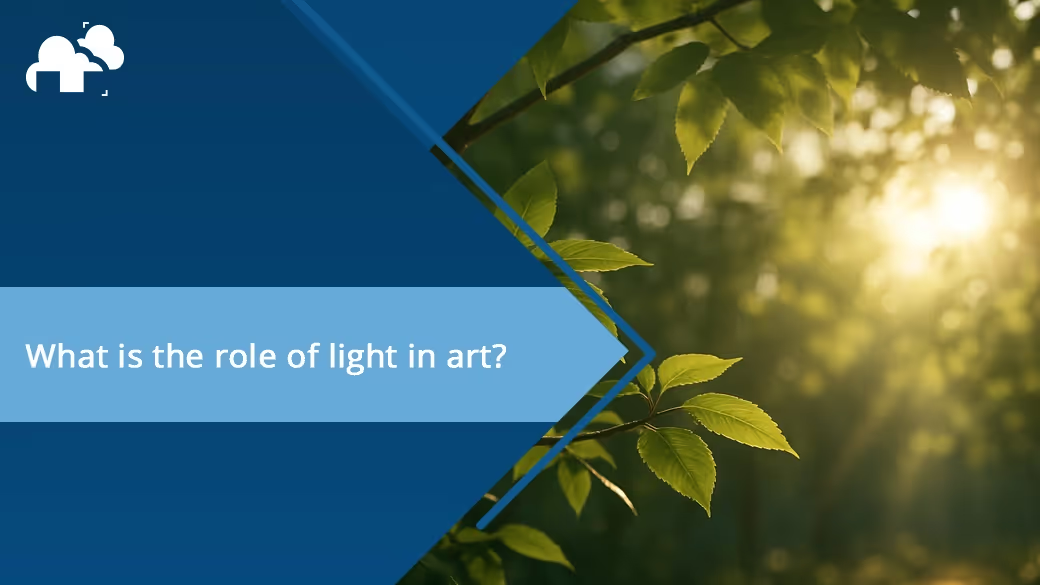
Light in art is more than just illumination but it is also the very essence of visual storytelling. From the earliest oil paintings of the Renaissance to the abstract canvases of modern expressionists, light has served as a powerful tool to shape perception, evoke emotion, and create meaning. The strategic use of light transforms a flat image into an immersive experience. In this article, we explore how light serves as a language in the visual arts and how mastering its nuances can elevate your work.
Light drives color, form, depth, and emotion. Artists use light to direct attention and build atmosphere. Understanding it makes you a better creator and viewer.
Without light, shape is lost. Artists depend on variations of brightness and shadow to define three-dimensional space on a two-dimensional surface. Light determines how we perceive volume. In many ways, light is the bridge between flatness and depth.
Color temperature, direction, and intensity all affect the emotional tone of an artwork. Cool tones evoke calm or melancholy, while warm hues, such as yellow, orange, and red, inject vibrancy and life. Subtle shifts in the sky or the time of day entirely change the feeling of a landscape.
Just as the eye naturally follows a beam of light, so too does a viewer’s attention track where an artist applies highlights and contrast. This is how composition benefits from thoughtful lighting: it allows the artist to tell a visual story, guiding the viewer through the image from focal point to supporting elements.
Artists often use shadow and contrast to enhance drama. The technique of chiaroscuro, perfected by Caravaggio, relies on stark lighting to emphasize the emotional weight of a scene. This use of high contrast enhances realism and gives a spiritual or theatrical dimension to the subject. In contrast, subtle gradients evoke calm, mystery, or introspection. The soft transitions between light and dark blur the edges of form, pulling the viewer into a dreamlike state.
Lighting plays a pivotal role in shaping mood, realism, and storytelling in 3D art. Broadly speaking, lights can be categorized by their source and each with distinct qualities and creative implications.
In 3D environments, natural light refers to sun and sky illumination and is often simulated using Sun lights or HDRI maps. Just as traditional painters like the Impressionists explored how sunlight alters color and perception throughout the day, 3D artists use sun position, time-of-day settings, and atmospheric scattering to replicate those shifting qualities. This is essential for achieving realistic outdoor scenes, golden hour shots, or the diffuse lighting of overcast days.
Artificial light in 3D art mimics indoor or human-made light sources such as lamps, spotlights, neon signs, and overhead fluorescents. These lights offer precise control over intensity, color temperature, and falloff, making them ideal for interior renders, product shots, or stylized cinematic lighting.
The sun wasn’t just a light source to Monet, it was the subject. He studied how atmosphere, fog, and time of day affect the way light reflects and colors shift. These studies helped birth Impressionism, a movement centered on the fleeting qualities of light.
In digital media, artists simulate realistic light using physically based rendering (PBR). By adjusting parameters like brightness, refractive index, and color, they mimic real-world lighting phenomena, from the glow of a sunset to the icy shimmer of a star-lit night. This attention to lighting creates more believable, emotion-driven scenes, bridging the gap between traditional art and abstract art.
Start with real life. Notice how the sky changes across the day, how a leaf filters light, or how glass refracts colors into a rainbow. These subtle cues are the key to realism.
Value studies (using only white, gray, and black) teach you how light defines form. Try replicating a Baroque painting to understand how historical artists layered light to build mass and volume.
Take photos during different weather conditions or times of day. Use them to study how shadows stretch, how fog diffuses light, or how a halo effect forms around a bright object.
Watch films and observe how different shots and scenes are lit. Take note of the different colors, the placement, and what they highlight and affect composition. For a deeper look into it, you may check out this article on Lighting principles for 3D artists from film and art.
To master light is to master how art speaks. It can shape the mind, stimulate the eye, and move the heart. Artists who understand lighting don’t just create better compositions, they create experiences. So whether you’re working with oil, pixels, or charcoal, take time to study light. It's not just a tool, it's the soul of your image.
Chiaroscuro is a technique using strong contrasts between light and dark to create a sense of volume and drama. It was pioneered during the Renaissance and mastered by Baroque artists like Caravaggio.
Color is the result of light interacting with surfaces. Artists use primary, secondary, and complementary colors to evoke mood and simulate realistic lighting. The electromagnetic spectrum, including visible light, plays a role in how we perceive color.
Use multiple light sources with varied intensities and angles. Avoid lighting a subject from the front alone. Add rim lights, fill lights, and ambient contributions to enhance depth and form.